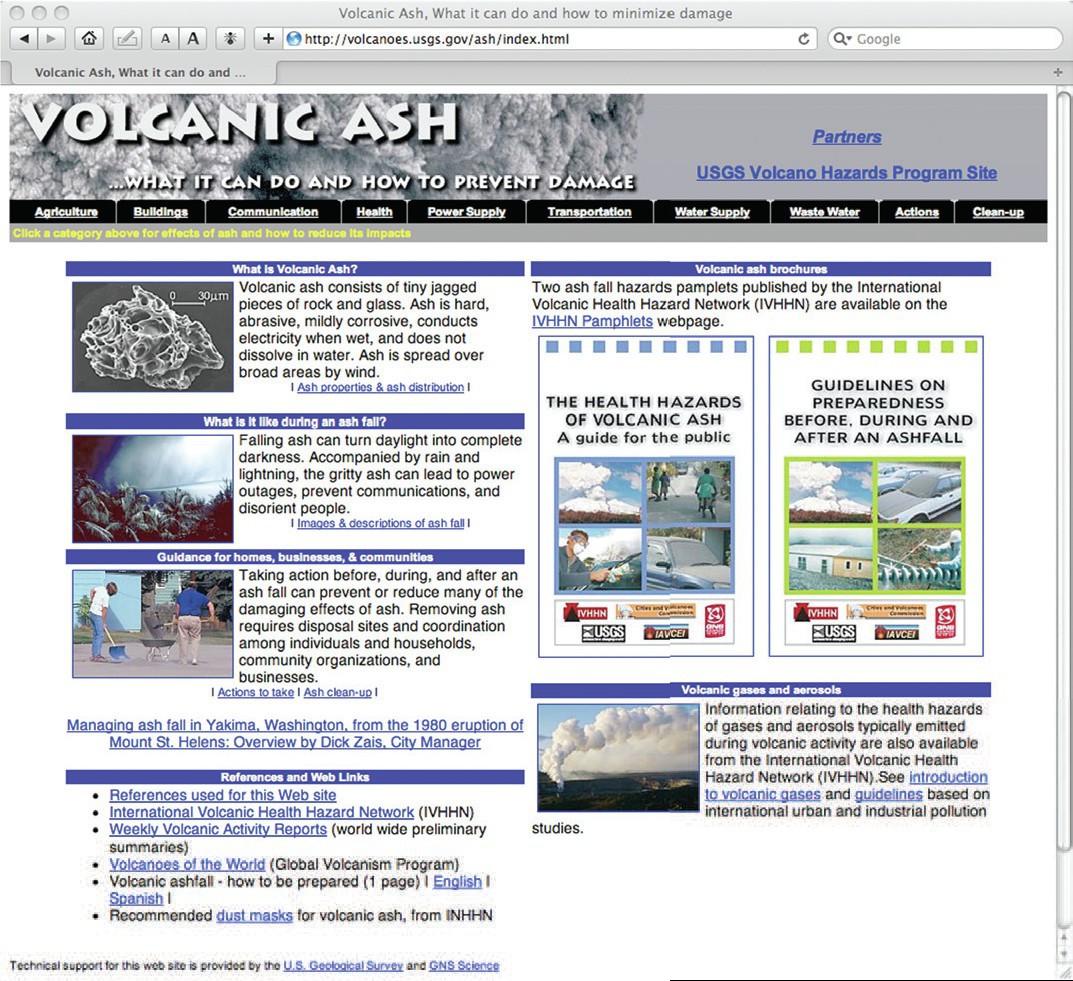
Sometimes an area of scientific research suddenly becomes very important. Before the eruption of the Eyjafjallajökull volcano in Iceland in 2010, there was little research into the effects of volcanic ash on aircraft and the movement of volcanic ash clouds. When the volcano erupted in March 2010 there was a sudden need for a greater understanding of how the ash plume spread and of its effects. Firstly, scientists wanted to understand in greater detail how the ash spread, so they needed better ways to detect and monitor it. Secondly, they wanted to understand its properties and the damage it could cause. Thirdly, in the future they hoped to make use of their new understanding to develop ways to reduce the problems that the volcanic ash clouds brought for air transport.
While problems for aircraft were not well known, other volcanic ash problems were already being researched by scientists all over the world. For example, the United States Geological Survey (USGS) has done a lot of research on volcanic ash and the problems it causes. In the USA there are areas with volcanoes, such as Hawaii, and plenty of opportunity to study the effects of ash followed the eruption of Mount St Helens in 1980. The idea for a website to inform of the dangers and help people developed in the USA and New Zealand and resulted in this site (‘Volcanic ash…what it can do and how to prevent hazards’), which is coordinated by USGS:
Your organisation does not have access to this article.
Sign up today to give your students the edge they need to achieve their best grades with subject expertise
Subscribe
